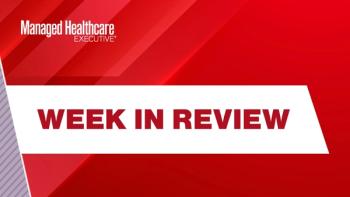
- MHE August 2024
- Volume 34
- Issue 8
States Are Setting Up Affordability Boards To Rein in Drug Costs
As millions of Americans grapple with the high price of prescription drugs, a few states have established prescription drug affordability boards (PDABs), and others have legislation in the works that they hope will help rein in costs. However, one board is already facing legal action for its decisions.
“No drug is effective if you can’t afford it or can’t take it as prescribed,” Tony Lourey, J.D., chair of the Minnesota PDAB, said during a webinar sponsored by the National Academy for State Health Policy. “It’s a public health problem,” added Benjamin N. Rome, M.D., M.P.H., assistant professor of medicine at Harvard Medical School in Boston. A survey by KFF found that more than one-fifth of adults have not filled a prescription because of the cost. Others have opted for over-the-counter medications instead, or they have cut pills in half or skipped doses because of costs.
The country’s first PDAB was established in Maryland in 2019 to make prescription drugs more affordable for patients and the healthcare system, Andrew York, Pharm.D., J.D., its executive director, said during the webinar. Five people sit on the board and 26 on a stakeholder council representing various groups in the healthcare ecosystem.
Facing pushback
So far, 11 states have approved establishing PDABs, and about a dozen more are considering doing so. Colorado has a setup like Maryland’s, with a five-member board and a 15-member advisory council, which were put in place in 2021. This year, it became the first in the country to try to curb prices — and the first to face a lawsuit as a result. “It’s a highly litigious space because of the money involved,”
noted Rome.
A cost review by Colorado’s PDAB in February found that the arthritis drug Enbrel (etanercept) was unaffordable, costing patients and their insurers up to $46,000 a year, The Denver Post reported. Patients’ out-of-pocket costs averaged $2,295 in 2022 if they were covered by commercial insurance or a Medicare Advantage plan. The board decided to set an upper payment limit for reimbursement. Lila Cummings, deputy commissioner of health policy for the Colorado Department of Regulatory Agencies, said the state was setting a payment limit, not
regulating price.
The PDAB’s decisions apply to commercial plans, but self-insured employer-sponsored plans can opt in, Cummings said. In response to the decision to set an upper payment limit, Enbrel’s manufacturer, Amgen, filed suit against Colorado’s PDAB in March 2024 in federal District Court in Colorado, claiming, among other things, that the decision is unconstitutional, overrides federal patent law and violates the due process clause for drug manufacturers. This summer, the board decided that Stelara (ustekinumab), used to treat conditions such as Crohn’s disease and plaque psoriasis, and Cosentyx (secukinumab), used for psoriatic arthritis, were unaffordable and began the process of setting an upper payment limit for them.
Other cost reviews
Maryland’s PDAB recently selected six drugs for cost reviews, including four used to treat type 2 diabetes: Ozempic (semaglutide), Trulicity (dulaglutide), Farxiga (dapagliflozin) and Jardiance (empagliflozin). The board also is reviewing Skyrizi (risankizumab), and Dupixent (dupilumab),A cost review is a way to “look under the hood” at what goes into the cost of medications, York said. One option in Maryland would involve setting upper payment limits, which would control both what state and local governments would pay for prescription drugs,
he noted.
Minnesota is now setting up its PDAB and will focus on the “most egregious drug families,” Lourey said, where the price paid is “significantly in excess of the manufacturers’ list price.” Minnesota’s board wants to examine where in the supply chain costs are being added, Lourey said. “The supply chain is so complex and convoluted,” Lourey said, adding, “You can’t fix a problem if you don’t understand it and don’t have the data to really
unpack it.”
Articles in this issue
about 1 year ago
Abby Sugg, M.S.H.C.M | 2024 Emerging Leaders in Healthcareabout 1 year ago
Nick Stepro | 2024 Emerging Leaders in Healthcareabout 1 year ago
Ana Cristina Rivera, Esq. | 2024 Emerging Leaders in Healthcareabout 1 year ago
Anoop Raman, M.D., MBA | 2024 Emerging Leaders in Healthcareabout 1 year ago
Pleasant Radford Jr., MBA | 2024 Emerging Leaders in Healthcareabout 1 year ago
Prerak Parikh, Pharm.D. | 2024 Emerging Leaders in Healthcareabout 1 year ago
Charles Lin, M.S. | 2024 Emerging Leaders in Healthcareabout 1 year ago
Kayla E. Friend, Pharm.D.| 2024 Emerging Leaders In Healthcareabout 1 year ago
Jamie Bullus, M.P.H. | 2024 Emerging Leaders in HealthcareNewsletter
Get the latest industry news, event updates, and more from Managed healthcare Executive.

















































